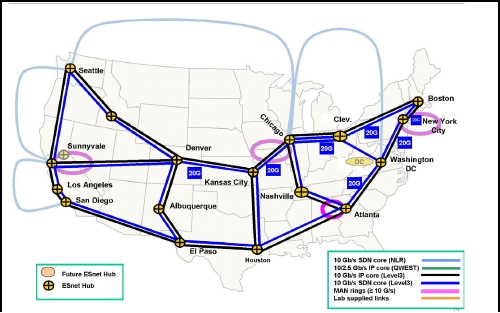The Science Data Network Core:
The increases in the total network bandwidth demand in the next several years are expected to be
mostly for circuit-like traffic involving specific experiments and computing systems. Given the
expense of high-bandwidth IP routers, and the fact that most of the large-scale science traffic end
points
will
be
relatively static in
nature (and therefore
the packets in the
network all tend to
go to the same places
and do not have to be
routed), switch based
technology is used to
manage the network
traffic resulting in
substantial
cost
savings.
The strategy, then, is
to build the SDN
core network is to
deploy a network that
is separate from (but
richly interconnected with) the IP core and that is made up of multiple 10 Gb/s circuits managed
by layer 2 / Ethernet switches.
Metropolitan Area Networks:
The strategy for connecting the DOE Science Labs reliably is to use a Metropolitan Area
Network ring architecture that effectively places the Labs directly on the ESnet core network.
More information about the MAN networks can be found in last year's ESnet report.
In 2007 the Chicago MAN was completed and five 10G circuits were connected from FNAL to
the international R&E peering point at Chicago Starlight.
26

